Angkor Wat, the largest religious monument in the world. A physical representation of Mount Meru, the sacred five-peaked mountain at the centre of all the physical, spiritual and metaphysical universes in Buddhist and Hindu cosmology. And as much as people talk about going to Siem Reap to visit “Angkor Wat”, what they really mean to say is that they are going to visit the Angkor Archeological Park, an area comprising 400 square kilometres within which rests the walled city of Angkor Thom, Bayon Temple, Ta Prohm Temple, Preah Khan Temple, and of course Angkor Wat itself. And that’s just to name a few – there are scores more, some more out of the way that others and in various states of collapse.
I know a lot of people who have visited Angkor, and every one of them found it an amazing experience. Many people go to Cambodia just to visit Angkor. I’m not one of those people and I admit I didn’t feel a burning need to see it. But this is my sixth visit to Southeast Asia and my first trip to Cambodia, so it kind of felt like something that we should do while we were here. And of course, being a photographer I thought it would be interesting from that angle. Get some good shots for the scrapbook, you know?
So we arrived in Siem Reap and made plans with a tuk-tuk driver to take us to Angkor a couple of days later. With due diligence I decided to actually do some research about the various temples because I honestly knew nothing except that one was called Angkor Wat. My first surprise was discovering the cost of entry tickets. Most people need more than one day to tour around the site, and with kids in tow we were definitely going to fall into that camp. We’d need a 3-day ticket at the cost of $62 each (luckily kids under twelve are free). Now, I know in the grand scheme of things, and for such a large and impressive site, that this is not a lot of money. But add it to the cost of a tuk-tuk and driver for each day ($15-20), the exorbitant prices of food inside the park ($6 for fried rice?!), as well as in much of Siem Reap itself, and Siem Reap was turning out to be our most expensive destination so far. Our budget was going to be officially blown for the duration. I hoped it was going to be worth it.
Our driver picked us up outside our apartment building at 7:30am and we headed to the ticket office to get our passes. Photos taken, passes in hand, we marched out of the building just a few minutes after entering. As we left, a huge queue was forming behind us at the ticket booths. We congratulated ourselves at having arrived just in time to miss getting stuck in line behind that massive tour group. We shouldn’t have felt so smug. Yes, we missed that tour group. It was the first but most definitely not to be the last we’d see that day.
We started off our circuit around the park at Angkor Wat itself. This is where 90% of everyone else also starts unless they request a specific temple to visit or have an astute tuk-tuk driver who knows how to, and can be bothered to avoid the crowds. It was about 8:30am and it was already hot and heaving.
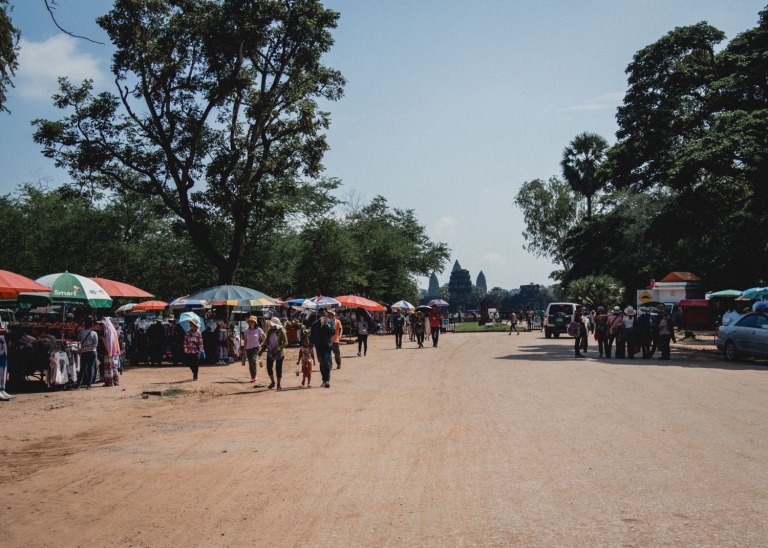
It quickly became clear to me that I was not going to be quietly wandering through ancient splendour having a transcendental experience. I mean, I know meandering in meditative contemplation wasn’t going to be easy with young kids in tow, but I had been game to at least give it a try. Unfortunately my Zen wasn’t strong enough to overcome the hollering hordes massing along the ancient thoroughfares. And photographically? I knew right away that the aim of the game had changed. I could forget about the classic views, my challenge would be to just get any views without hundreds of bodies in them. So off we set down side-paths, skipping the main approach to the temple and investigating side structures and less frequented passageways.
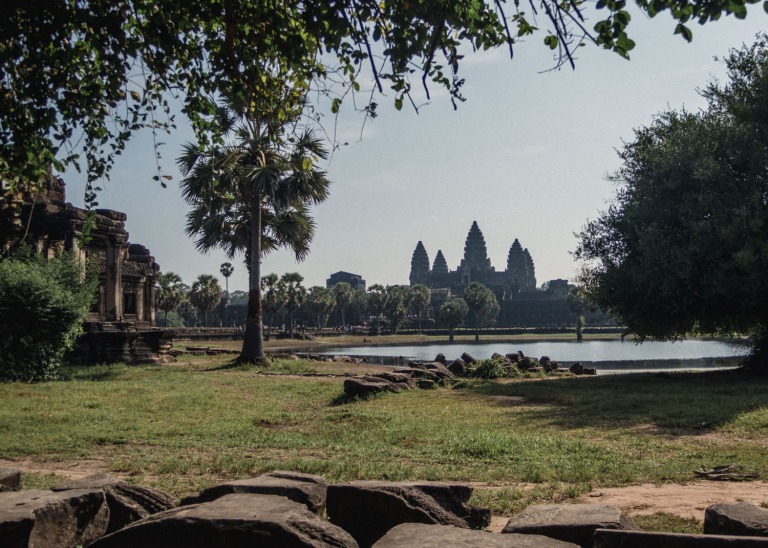



We skipped going to the uppermost levels of Angkor Wat when we saw the size of the queue we’d have to wait in to do so.
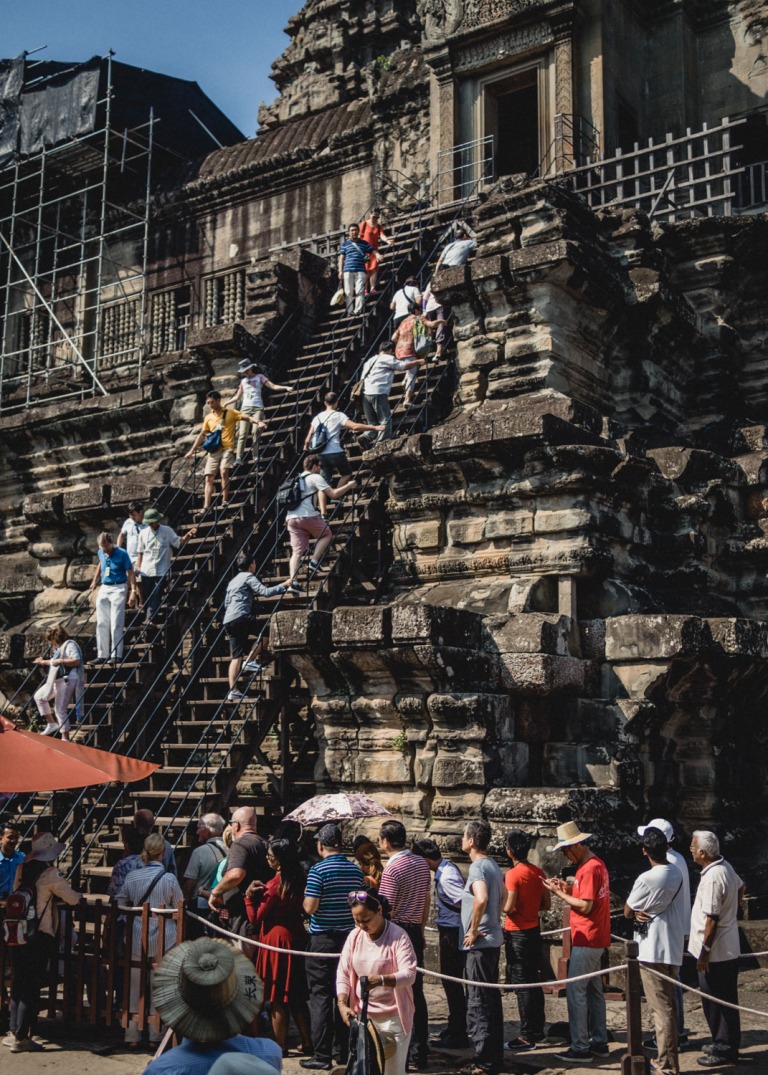
The kids were already tired, hungry and thirsty so we decided to head back to the tuk-tuk and find some refreshments. But first we had to make our way through a gauntlet of merchandise and hawkers.
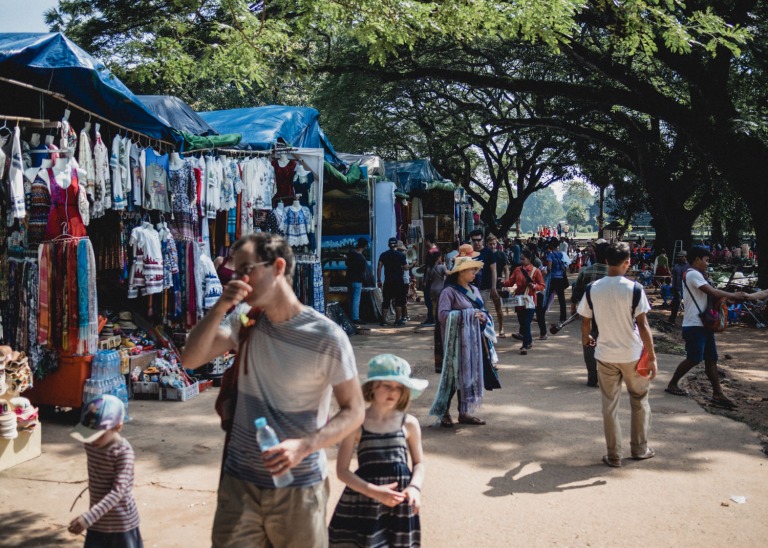
Back in the Tuk-tuk and a short drive later we were dropped off at the South Gate of the ancient walled city of Angkor Thom. It’s quite a sight and must have been an impressive entrance for the ancient Khmers who passed through it. We picked up some pineapple and bananas then passed through ourselves, meeting our driver at the other side.
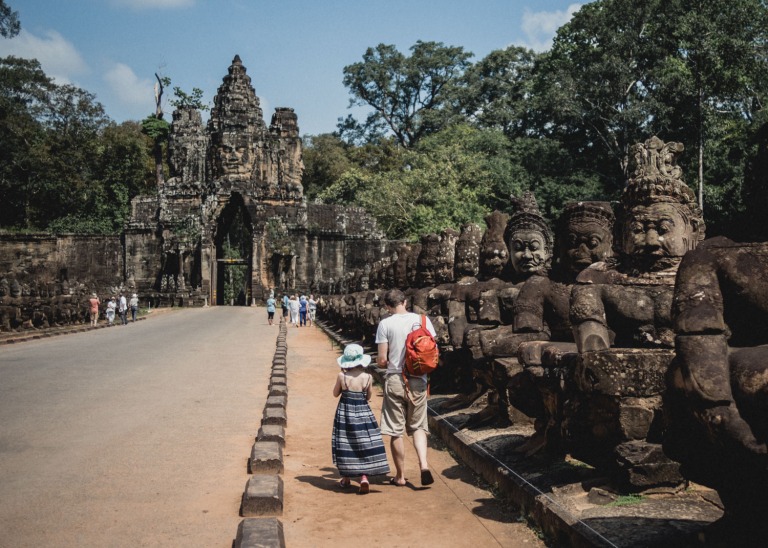


Next stop was the Temple of Bayon but by then the kids were getting templed-out. It just wasn’t as fun as we’d thought it might be for them to clamber through the ancient sites. Partly, I think it was just too hot and one piece of stone looked much like another to them. Alex took them on ahead to a nearby forest temple which we hoped might be more shaded, while I entered Bayon. After Angkor Wat, Bayon is probably the second most popular temple to visit due to the massive carved stone faces with their enigmatic smiles that adorn its walls and towers.

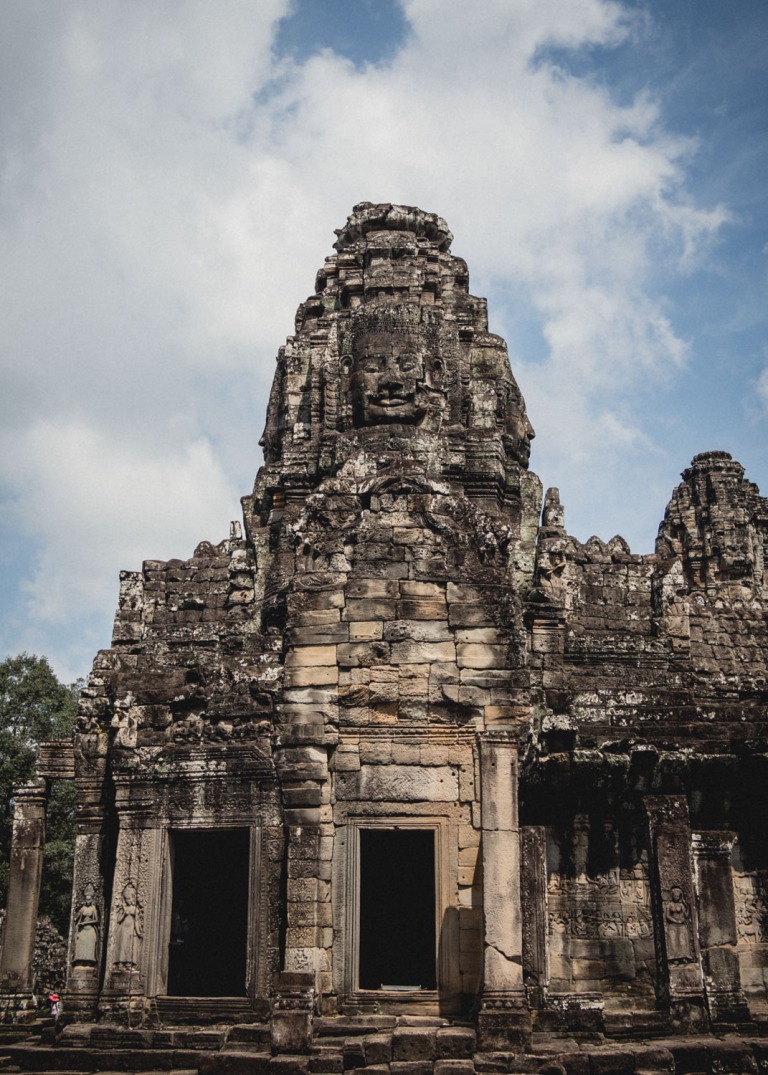
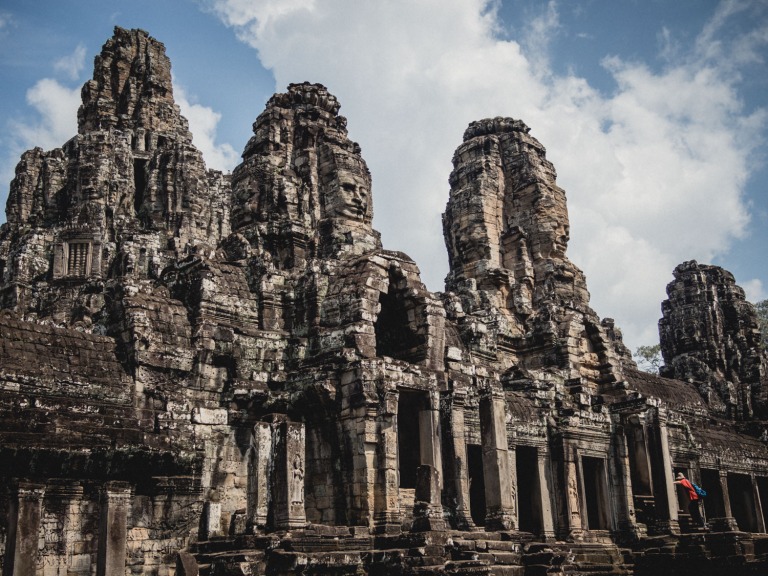
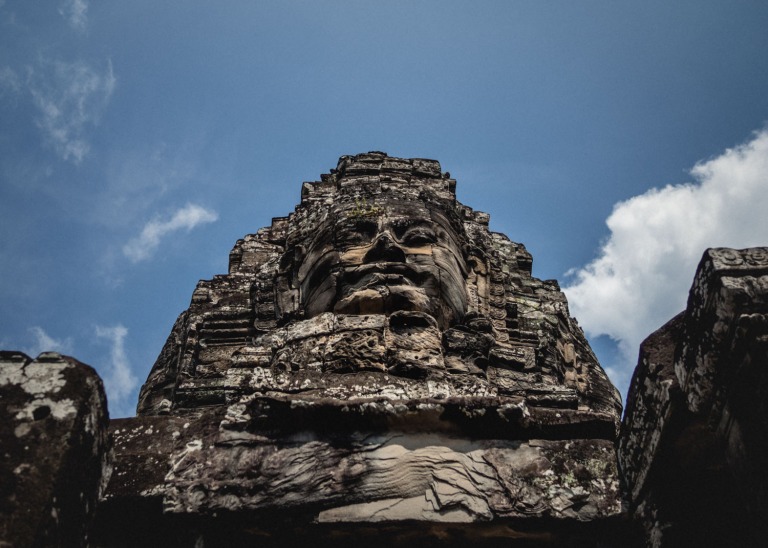

The Temple is an amazing work of art, and one that I really, really wanted to experience in all its grandeur. Instead I found myself distracted and bemused by the tourists around me. There were so many of them. Now, I’m aware that my pictures up until this point have looked pretty devoid of people. If you’ve been wondering what all the fuss I’m making is about, then I’m going to give myself a pat on the back for a photographic job well done. A slight turn of the camera from the last image reveals:

I actually returned to Bayon on another day in an attempt to find the temple a bit quieter. No such luck, it was even busier with busload after busload of Japanese and Chinese tour groups swarming around the site; lining up to take pictures with every carved face near eye-level. Posing in ‘amusing’ ways with them; nose-to-nose, kissing cheeks, holding a face on the flat of their hand. Selfie sticks waving furiously.
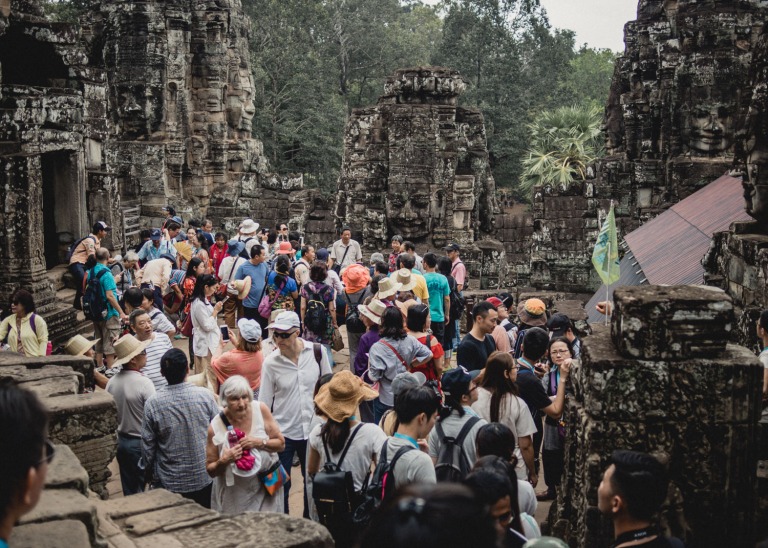
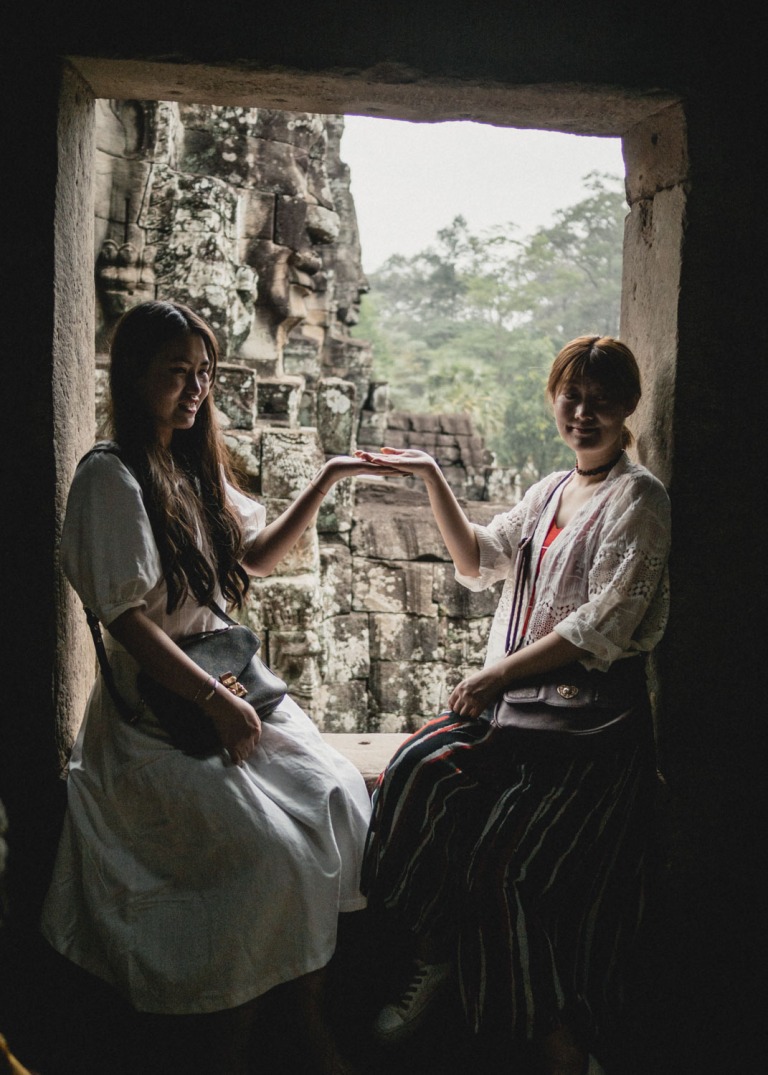

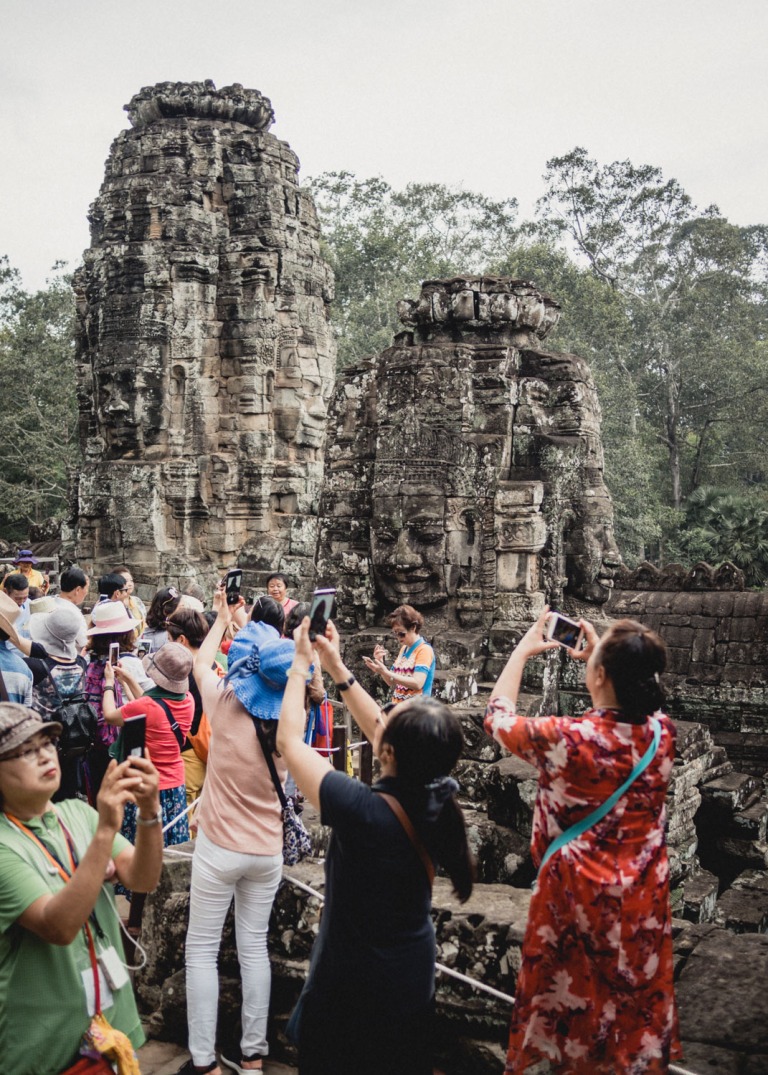
It was kind of hard to take it all in. On that second occasion, I sat on a stone for half an hour watching the hubub around me in the hope that it may quieten down between waves of tour groups, but it was relentless. It was certainly an experience, but not the kind I’d been looking for.
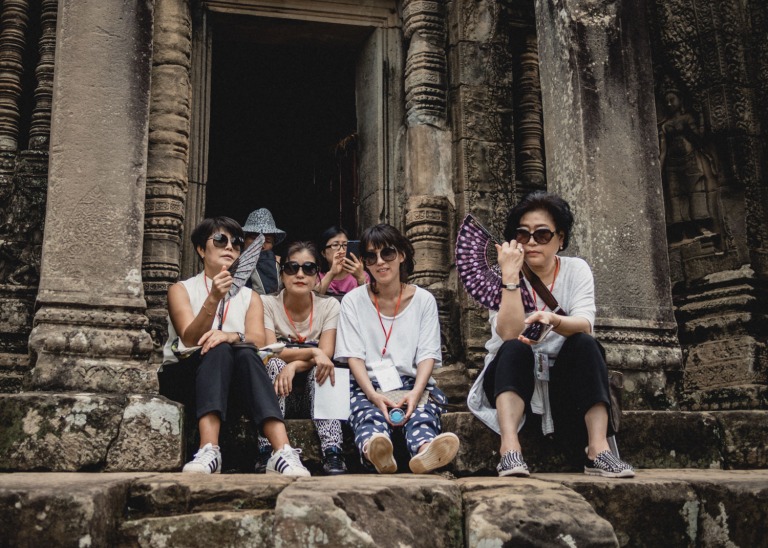
Back to the first day, I met up with Alex and the kids at the Baphuon Temple which unfortunately they’d been unable to explore because children under twelve were not allowed in. Alex stayed down at the base with the kids and shooed me up with my camera. I had the distinct impression he wanted me to get all the photo malarkey done with so I felt a bit rushed and under pressure as I traipsed up the steep stairs towards the top of the temple, just one in a long line of bodies ascending towards the heavens. It was a lovely view from the top, I’ll give it that.
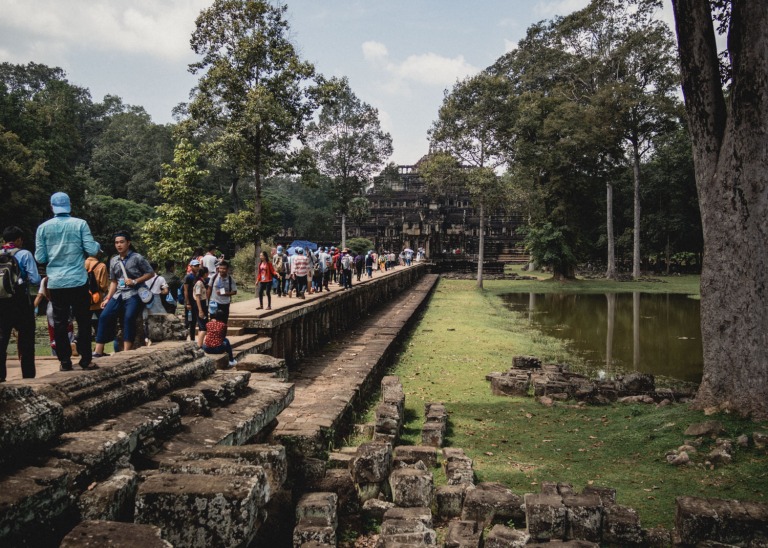
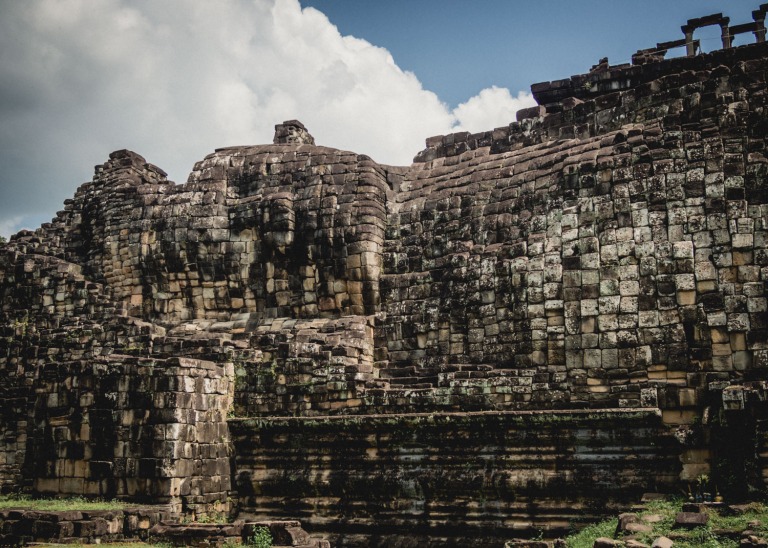

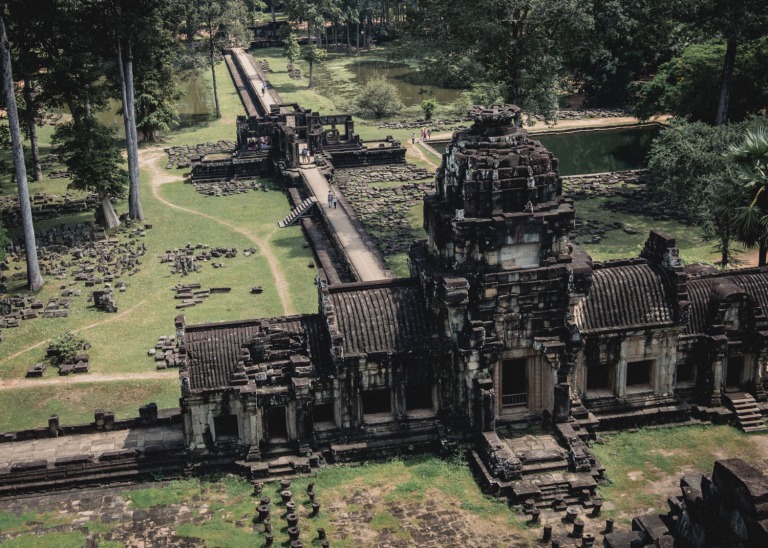
When I got down we decided that trying to do any more sightseeing with the kids that day was only going to end in tears, and not just theirs. Our tuk-tuk driver agreed to take us back into town and then to bring me back out on my own later in the afternoon. For an extra $5.
My afternoon was a very different experience from the morning. I arrived at the gateway to Ta Prohm at 3:30pm as the afternoon was starting to cool. I wandered slowly down a long sandy pathway through the forest towards the temple. Parakeets flew overhead and birdsong filled my ears. I was by no means alone, but there were far fewer people around, and a sense of quiet was being preserved. Ta Prohm is well known as the temple with a tree growing on top of it, its roots cascading down over the temple walls to the ground. I had been especially looking forward to photographing it, so I was disappointed to find that wooden platforms and railings have been built in front of most of the areas with tree growth at the temple. Obviously good from a preservation point of view, which is clearly more important that my selfish photographic desires, but it was still a bummer.
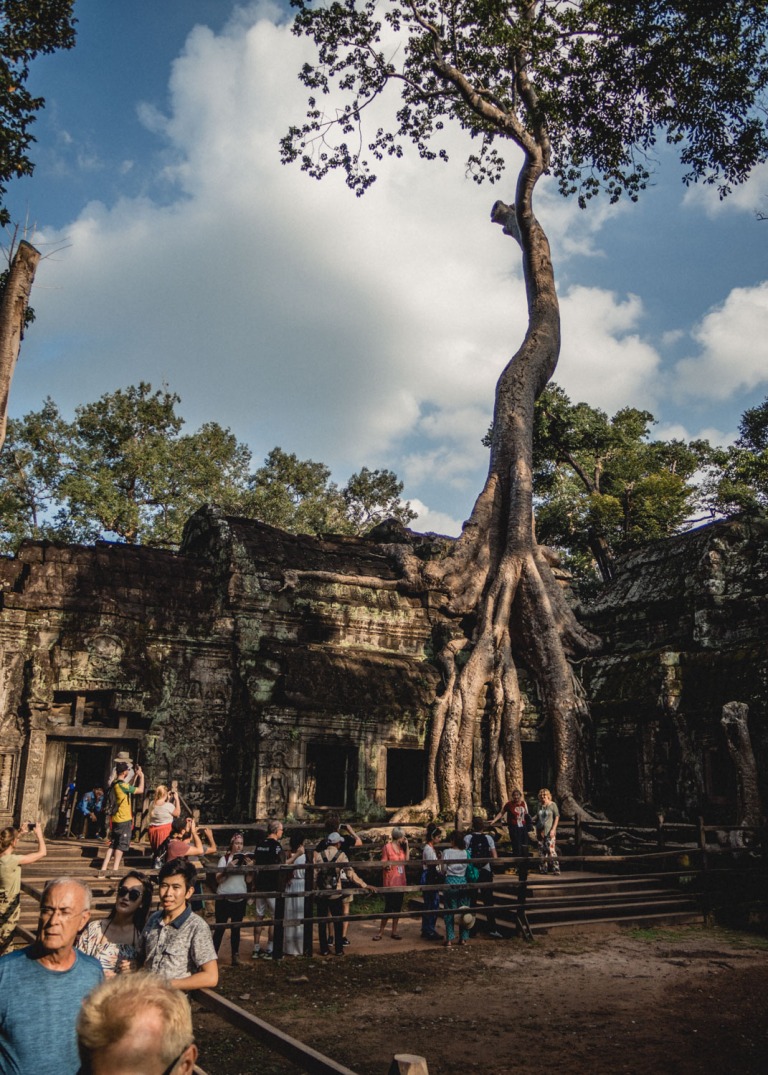
But I discovered that Ta Prohm has much to offer other than its arboreal fame. I ducked out of a passageway away from the main pathways and found myself exploring ruined temple areas for a good hour, meeting only a few other people here and there. The solitude was beautiful.
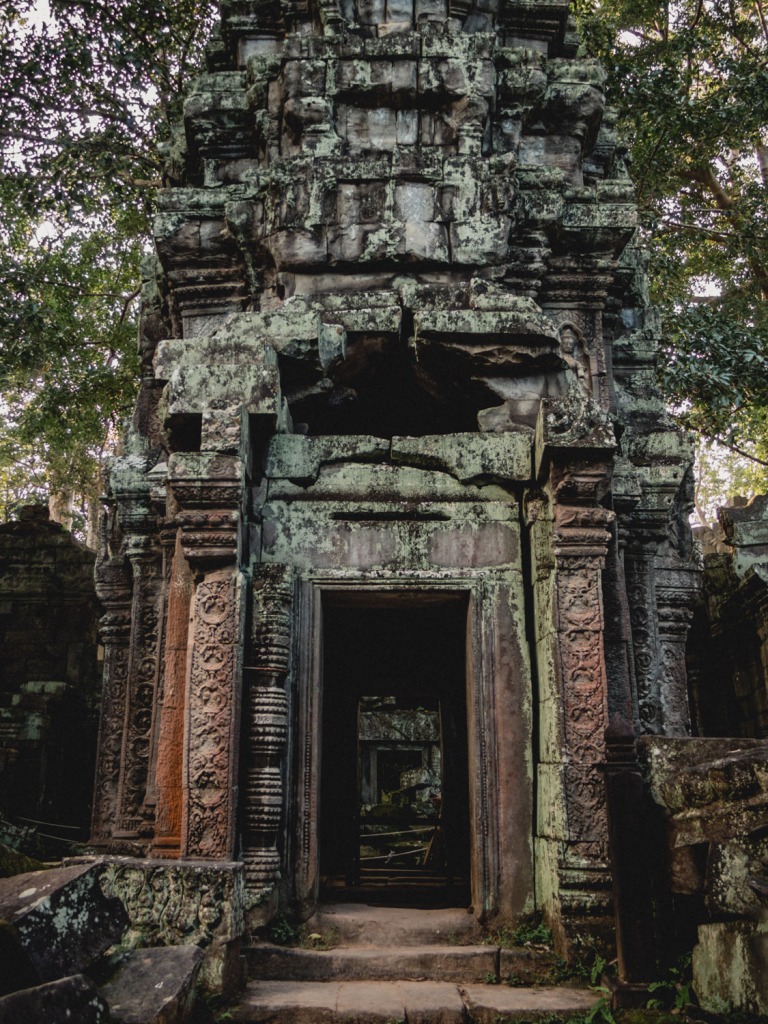

After Ta Prohm I visited Banteay Kdei, another almost deserted temple that was a pleasure to explore as the sun was setting. The temple stones turning golden in the day’s last light.
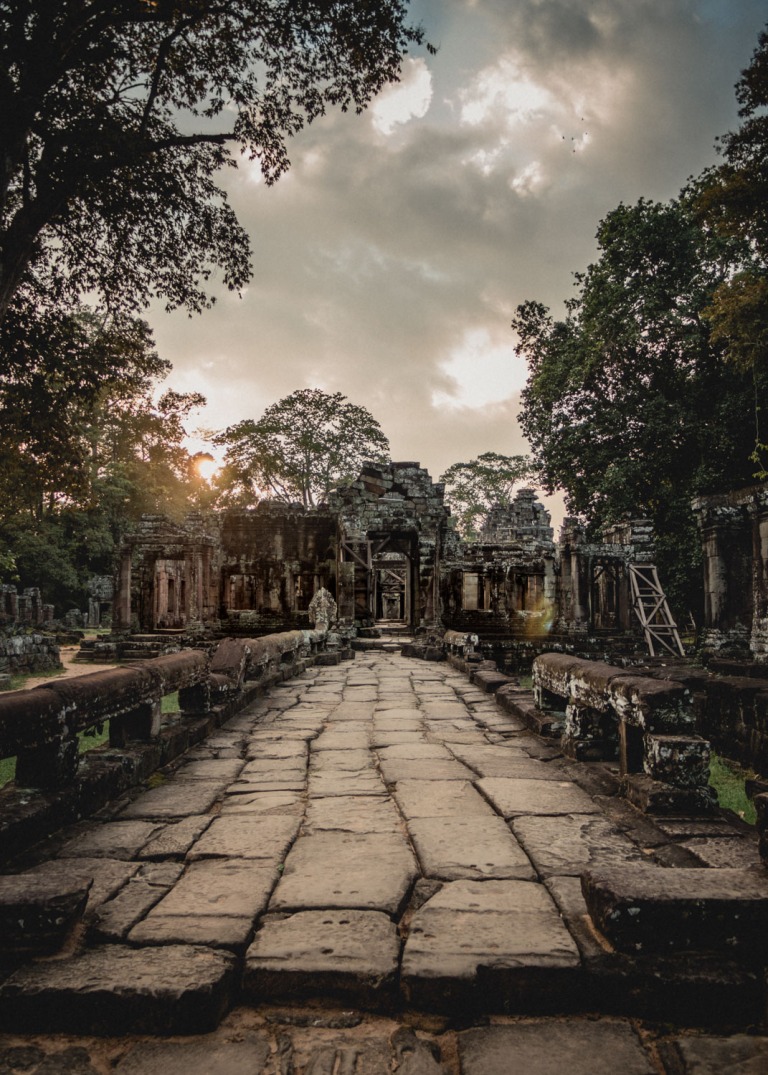
I think that day was a good representation of my experience at Angkor as a whole. Fleeting moments of peace in which to try to grasp the enormity of what was created there more than a millennium ago, overshadowed by far more frequent experiences of enormous crowding that reduced much of my enjoyment and evaporated any sense of mystery or awe I might have felt. At times, trying to find a quiet temple felt like a frustrating game of avoidance that I could never win.
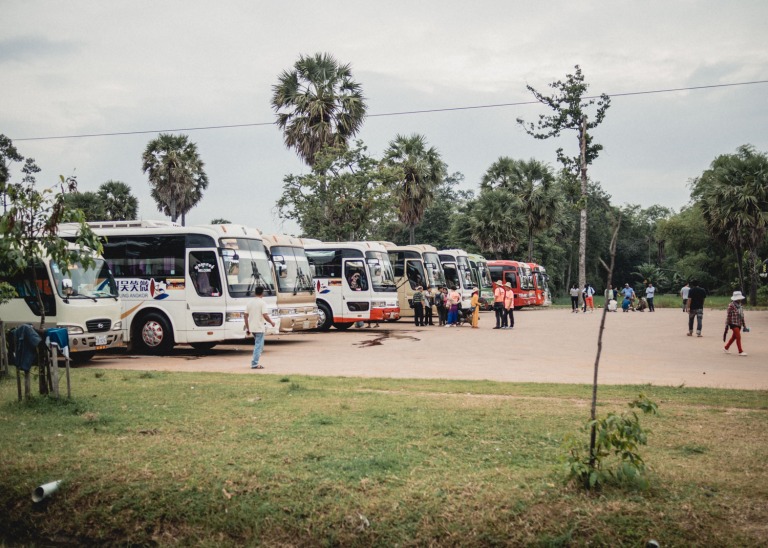
In the end, I came away from Angkor with mixed feelings. From a historical perspective it is no doubt still fascinating regardless of the crowds, and perhaps had we felt we had the budget the splurge on a tour guide we might have enjoyed it more. But we didn’t feel the kids would retain interest long enough, and we were already busting our budget so it just wasn’t on the cards. I was there for the aesthetics, to witness beauty, as well as beautiful ruin. I wanted to be moved, to be awed. The sheer volume of other visitors significantly altered that aspect of the experience for me, and I still struggle to decide if it was worth going or not. I don’t mean to sound self-righteous about crowds – I know I am but one more body adding to the throng. Maybe that’s just what Angkor is like now, and what needs to be expected before visiting. I think that if I expected solitude I needed to have visited fifteen years ago, and that ship has sailed. It’s not impossible to find some time to yourself, I had a meditative morning visiting Pre Rup at 7:30am, wandering alone up and down the beautiful flower-seeded stones for almost an hour.
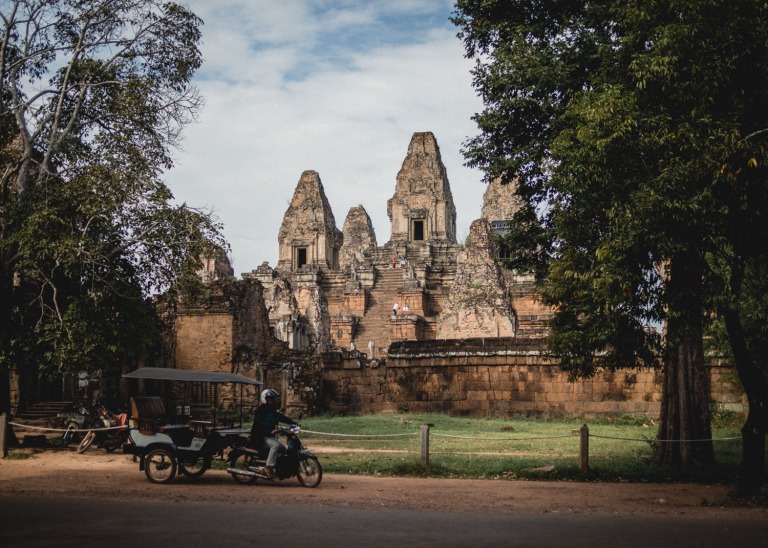
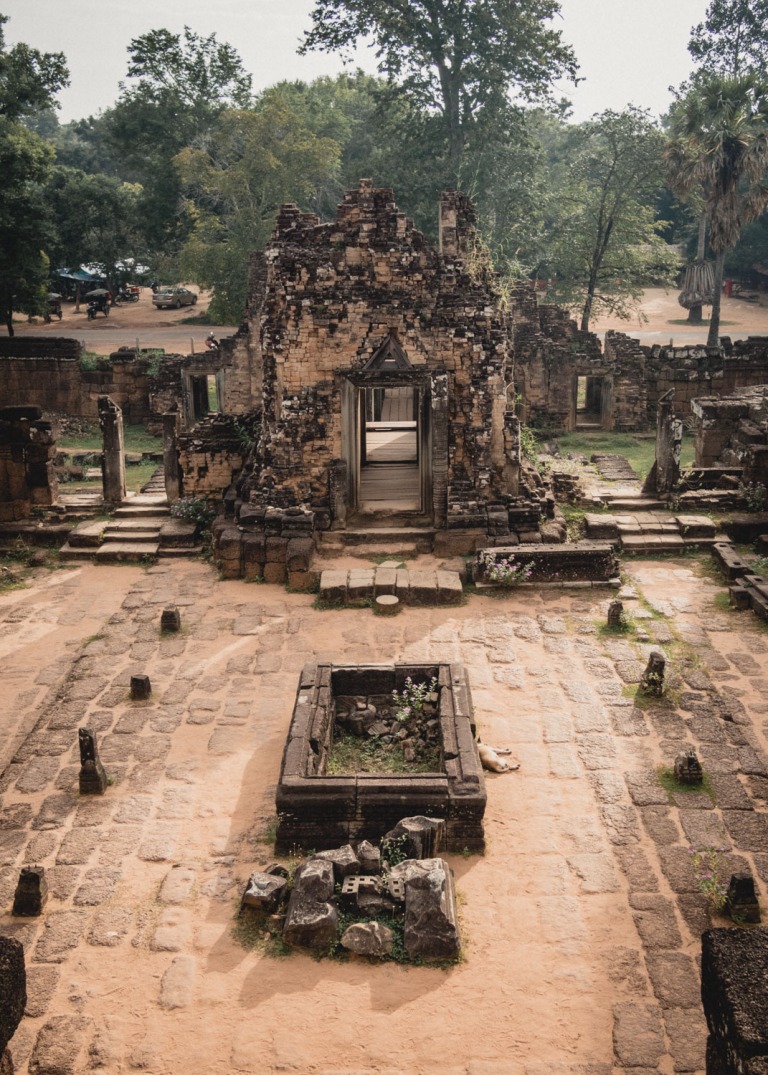
Unfortunately, with over 2 million foreign visitors wandering through Angkor’s ancient sites a year, if you want to visit the popular temples, you pretty much have to just grin and bear it when it comes to the crowds. The locals do, after all.
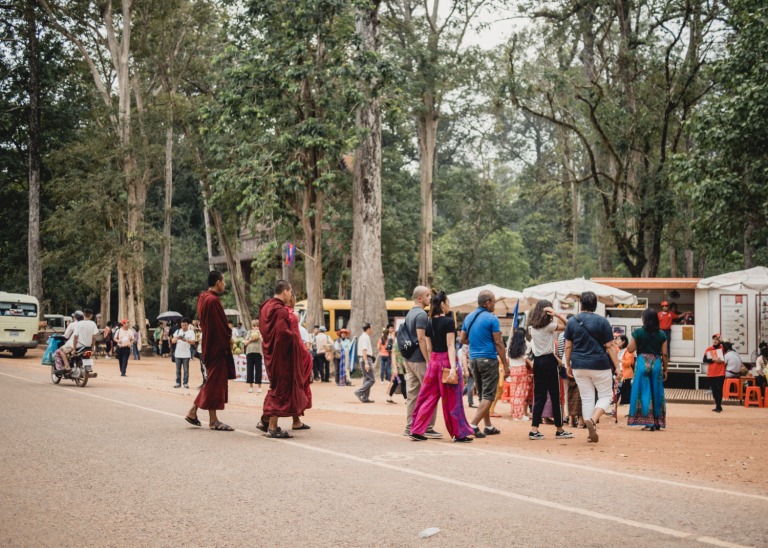
All content including images © Leigh Eros. Not to be used without permission

What a wondrous world is this. Thanks to your writing and photo skills I am in the moment with you. xo
LikeLike
What an amazing place, Bear. Imagine it a thousand years ago! Still, with the heat, humidity and crowds, I probably wouldn’t have even lasted as long as Chloe and Ben did!! Lol. They’re little troopers.
LikeLike
I found the Parthenon similarly crawling with tourists. Regardless of the crowds you inspire me to want to go there. It sounds amazing. Thanks
LikeLike